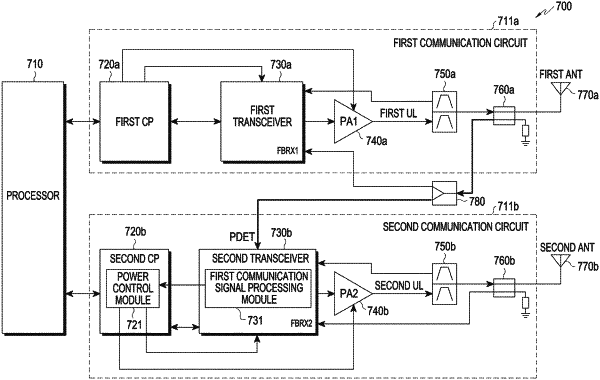| CPC H04W 52/146 (2013.01) [H04W 52/08 (2013.01); H04W 52/243 (2013.01); H04W 52/346 (2013.01); H04W 76/16 (2018.02); H04W 88/06 (2013.01)] | 20 Claims |

|
1. An electronic device, comprising:
a housing;
a plurality of antennas disposed inside the housing or disposed on at least a part of the housing;
a first transceiver configured to:
generate a first signal corresponding to a first communication network, and
transmit the first signal to a first antenna from among the plurality of antennas;
a second transceiver configured to:
generate a second signal corresponding to a second communication network, and
transmit the second signal to a second antenna from among the plurality of antennas;
a first coupler electrically connected between the first antenna and the first transceiver;
a splitter electrically connected to the first coupler, wherein the splitter is configured to distribute and transmit the signal received via feedback from the first coupler, to the first transceiver and the second transceiver; and
a communication processor operatively connected to the first transceiver and to the second transceiver,
wherein the communication processor is configured to control a transmission power of the second signal, at least partially based on the signal received by the splitter.
|